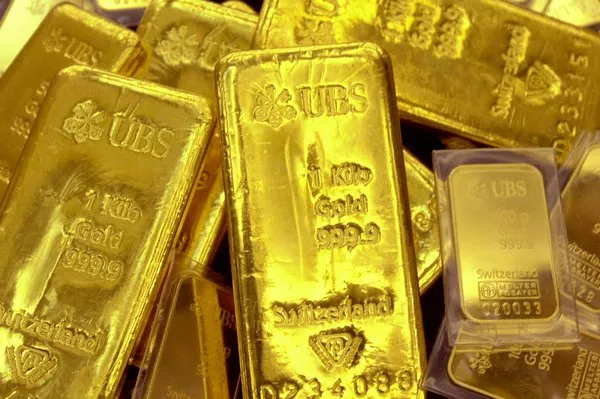In the realm of commodities, the allure of precious metals has recently intensified as gold prices experienced a notable uptick in Asian trading sessions. The surge in value has brought these metals within striking distance of record highs, fueled by a surge in safe-haven demand amidst mounting apprehensions surrounding decelerating economic growth.
The boost in metal markets was further bolstered by a weakening dollar, as a string of lackluster economic reports from the United States prompted traders to factor in heightened expectations for additional cuts to U.S. interest rates throughout the year.
Spot gold edged up by 0.4% to reach $2,453.51 per ounce, while gold futures set to expire in December saw a 1% increase, reaching $2,495.40 per ounce as of 00:51 ET (04:51 GMT).
Notably, gold futures briefly eclipsed the $2,500 per ounce mark in recent trading sessions. Despite this, spot prices, which reflect the immediate demand for gold, stood approximately $25 shy of the all-time high of $2,483.78 per ounce recorded back in July.
The surge in demand for the yellow metal can be attributed to the safe-haven appeal it offers. Following a series of disappointing economic indicators from the U.S., particularly concerning manufacturing activity and the labor market, concerns regarding an accelerated slowdown in the world’s largest economy have been reignited.
This wave of uncertainty triggered a widespread sell-off across risk-driven markets, notably in equities, Treasuries, and foreign exchange, consequently sparking increased safe-haven interest in gold.
Moreover, the possibility of a weakened economy prompted traders to anticipate more pronounced interest rate cuts by the Federal Reserve, which recently hinted at the potential for a rate cut in September.
Projections from CME Fedwatch suggest that the central bank may implement rate cuts totaling 50 basis points in September, potentially culminating in a 100-basis-point reduction by year-end. Such a scenario is favorable for gold, as lower interest rates diminish the opportunity cost associated with investing in non-yielding assets.
This positive sentiment also extended to other precious metals, with silver futures rising by 1.2% to $28.720 per ounce, while platinum futures experienced a modest decline of 0.8% to $958.40 per ounce.
In the realm of industrial metals, copper prices, which faced recent pressures, found support following encouraging economic data from China, a key importer.
Benchmark copper futures on the London Metal Exchange climbed by 0.6% to $9,151.50 per tonne, with one-month copper futures also registering a 0.3% increase to $4.1350 per pound.
Private data on purchasing managers’ indices released on Monday indicated a stronger-than-expected growth in China’s services sector in July, suggesting resilience in certain segments of the economy despite a downturn in manufacturing activity. This positive report helped bolster sentiments towards China, which has been a focal point of concern for copper markets.
While fears of an economic slowdown in China have weighed on copper demand and led to recent price slumps, the prospect of a global economic deceleration poses challenges for the red metal’s future outlook.


